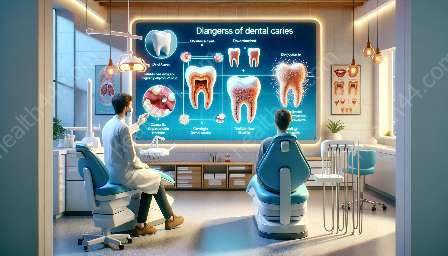Oral health disparities and inequalities are significant issues affecting underserved communities worldwide. Access to adequate oral healthcare is often limited in underserved areas due to a variety of factors, resulting in a higher prevalence of oral health issues and related complications. This topic cluster explores the critical need for oral health promotion in underserved communities, addressing the disparities, inequalities, and the effects of poor oral health.
Understanding Oral Health Disparities and Inequalities
Oral health disparities refer to variations in the prevalence, severity, and treatment of oral diseases and conditions among specific population groups. These disparities are often influenced by social, economic, and environmental factors, leading to unequal access to oral healthcare services. Underserved communities, including low-income individuals, racial and ethnic minorities, and rural populations, are particularly vulnerable to oral health disparities.
Moreover, inequalities in oral health outcomes are closely linked to socioeconomic factors, educational levels, and cultural disparities. Individuals living in poverty or facing economic hardships often experience higher rates of untreated dental diseases, leading to a cycle of poor oral health outcomes and limited access to proper dental care.
Effects of Poor Oral Health
Poor oral health has far-reaching consequences beyond the mouth, impacting overall well-being and quality of life. The effects of untreated oral health issues can include chronic pain, difficulty in eating and speaking, and increased risk of systemic health conditions, such as diabetes and cardiovascular diseases. In addition, children in underserved communities often miss more school days due to dental problems, affecting their academic performance and long-term opportunities.
Strategies for Oral Health Promotion in Underserved Communities
Addressing oral health disparities and inequalities requires a multi-faceted approach that encompasses preventive dentistry, education, and access to affordable care. Community-based oral health promotion programs play a crucial role in reaching underserved populations and breaking down barriers to oral healthcare services. These programs can include:
- Education and Outreach: Providing oral health education and promoting awareness of the importance of preventive dental care through local schools, community centers, and outreach events.
- Mobile Dental Clinics: Bringing dental services directly to underserved communities through mobile clinics, which can enhance access to preventive and restorative oral care.
- Collaborative Partnerships: Forming partnerships with local healthcare providers, government agencies, and community organizations to expand access to oral health services and improve care coordination.
Furthermore, advocacy for policy changes and increased funding for oral health programs can help address systemic barriers and improve the overall oral health infrastructure in underserved areas.
Bridging the Gap in Oral Healthcare Access
Efforts to promote oral health in underserved communities must prioritize equitable access to comprehensive dental care, including regular check-ups, preventive treatments, and timely interventions. By addressing the root causes of oral health disparities and inequalities, communities can work towards creating a future where everyone has the opportunity to achieve optimal oral health and overall well-being.
In conclusion, the challenge of oral health promotion in underserved communities is a pressing issue with profound implications for public health and social equity. By understanding the underlying drivers of oral health disparities, exploring the effects of poor oral health, and advocating for sustainable solutions, we can pave the way for a future where every individual, regardless of their socioeconomic status or background, has access to essential oral healthcare services.



